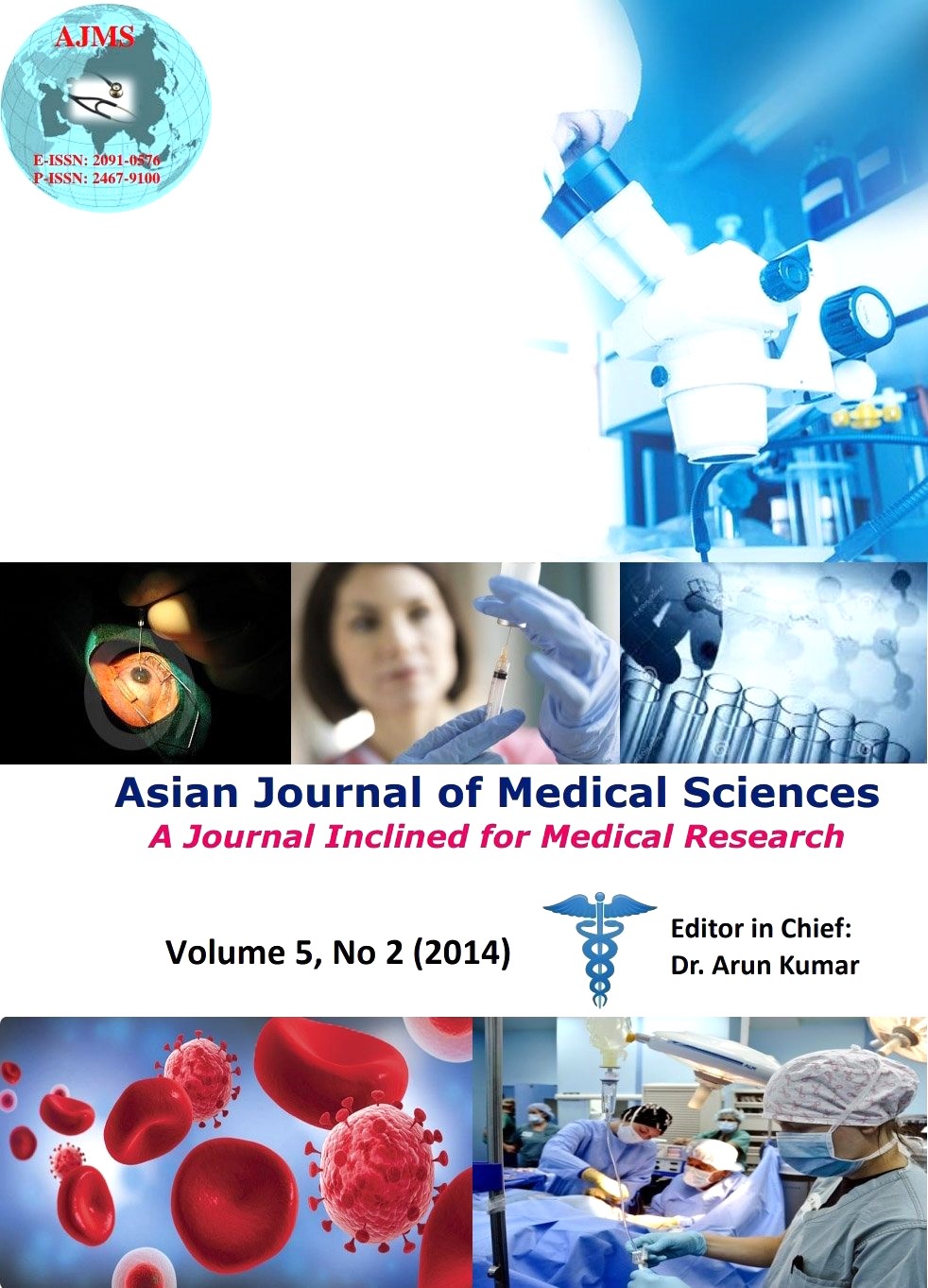Occupational Exposure and Pulmonary Function of Workers of Carpet Industries and Sawmills, Lalitpur, Nepal
Keywords:
pulmonary function, workers, spirometry, wood dust, cotton dustAbstract
Background: Most workers of carpet factory and sawmills suffer from non-specific lung diseases and ventilatory disorders. There is so many such industries operative in Lalitpur district and so far not many studies have been reported on pulmonary function in these workers.
Method: A brief clinical sheet regarding age, occupational particulars, smoking habits and presence or absence of major complaints was recorded for each worker. Spirometric parameters were recorded using an electronic (MEDSPIROR) spirometer. The groups consisted of control subjects not exposed to industrial dusts (n=50) for each group of workers (carpet factory, n=50 and saw mill, n=50).
Result: This study indicated an overall reduction in pulmonary function parameters; in particular FVC, FEV1 and FEV1/FVC % in carpet factory workers and FEV1 and FEV1/FVC % in saw mill workers. Comparison of pulmonary function parameters between carpet factories workers and sawmill workers revealed a significant reduction in FEV1 and MVV in carpet workers.
Conclusion: Exposure to cotton dust and wood dust leads to combined type of spirometric deficit revealing obstructive or restrictive lung diseases. Workers exposed to industrial dusts also suffer from various upper or lower respiratory symptoms.
DOI: http://dx.doi.org/10.3126/ajms.v5i2.8951
Asian Journal of Medical Science, Volume-5(2) 2014: 54-58
Downloads
Downloads
Additional Files
Published
How to Cite
Issue
Section
License
Authors who publish with this journal agree to the following terms:
- The journal holds copyright and publishes the work under a Creative Commons CC-BY-NC license that permits use, distribution and reprduction in any medium, provided the original work is properly cited and is not used for commercial purposes. The journal should be recognised as the original publisher of this work.
- Authors are able to enter into separate, additional contractual arrangements for the non-exclusive distribution of the journal's published version of the work (e.g., post it to an institutional repository or publish it in a book), with an acknowledgement of its initial publication in this journal.
- Authors are permitted and encouraged to post their work online (e.g., in institutional repositories or on their website) prior to and during the submission process, as it can lead to productive exchanges, as well as earlier and greater citation of published work (See The Effect of Open Access).




